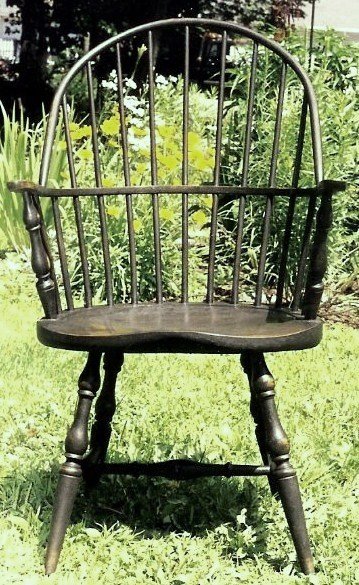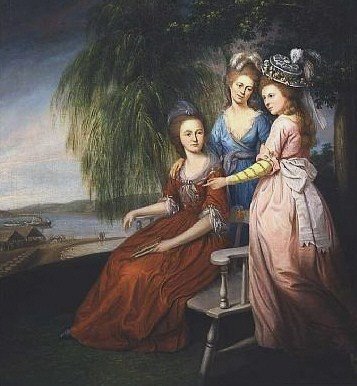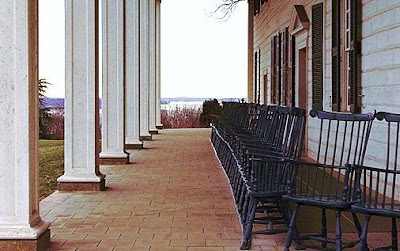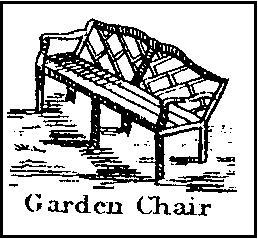The Soul of Food: Slavery’s Influence on Southern Cuisine by Christina Regelski
...The influences for many of the Southern foods we enjoy come directly from colonial & antebellum slave quarters. Southern food, often perceived as the quintessential American cuisine, is actually derived from a complex blend of European, Native American, & African origins that found realization in the hands of enslaved people. While Southern food has evolved from sources & cultures of diverse regions, classes, races, & ethnicities, African & African American slaves have one of the strongest yet least recognized roles. For enslaved people, cooking was about culture & community as much it was about survival.
...When enslaved people reached North America (5% of Africans who were enslaved in the transatlantic trade were sent to North America), rations were often used as a powerful form of control on many plantations. By supervising food, slave-owners could regularly establish their authority over enslaved people, while also attempting to prove their “generosity” toward their slaves. Slaves’ diets were frequently a primary point of debate between abolitionists & slaveholders, with pro-slavery supporters using rations to “prove” the good quality of life African Americans had under slavery.
James Madison defended slavery by arguing that slaves have better diets than the lower classes in Europe: “They are better fed, better clad, better lodged, & better treated in every respect…With respect to the great article of food particularly it is a common remark among those who have visited Europe, that it [slave diet] includes a much greater proportion of the animal ingredient, than is attainable by the free labourers even in that quarter of the Globe.”
... Pork, along with corn, was the primary ration issued to slaves on many plantations. Though rations could vary widely, slaves typically received an average of three pounds of pork per week. Slaves, however, would usually be issued what was considered to be the lesser cuts of the hog, such as the feet, head, ribs, fatback, or internal organs. To hide the poor flavor of these cuts, enslaved people drew inspiration from traditional African cooking & used a powerful mixture of red pepper mixed with vinegar on their meat. West African cuisine relied heavily on the use of hot spices, & slaves continued this tradition by growing various peppers in their gardens to add to their dishes...
If barbeque is the heart of Southern cooking, cornbread is the backbone...Introduced to settlers by Native Americans, corn was an early staple for Euro-Americans. Corn, however, had a particularly strong hold in the South. Corn could grow well on less fertile land, which made it an ideal staple for planters who saved the best land for cash crops, such as cotton. Corn was the most common ration for enslaved people in the South.
Since enslaved people ate form of corn at almost every meal, they created a variety of ways to prepare it drawing inspiration from their Native American neighbors. In the seventeenth century, many enslaved Africans may have noticed similarities between their cultures. Historian Jessica B. Harris noted that drawings of Native Americans in North Carolina made by English colonist John White in the sixteenth century depict communal eating from a bowl, which was also a common practice in West Africa. Native Americans shared their expertise of growing & preparing maize with both African & Europeans, including the art of making bread from corn instead of wheat. To prepare this bread, Native Americans created dough from cornmeal & water, covered the dough with leaves, & then placed the covered dough in hot ashes to bake. This recipe & technique is almost identical to the ways many slaves would make breads variously called hoecake, ash-cake, spoonbread, corn pone (the word pone comes from the Algonquian word apan), & cornbread.
Irene Robertson, a former slave from Arkansas, had the following recipe for bread:“Sift meal add salt & make up with water, put on collard leaf, cover with another collard leaf put on hot ashes. Cover with hot ashes. The bread will be brown, the collard leaves parched up…”
Polly Colbert, a former slave from Oklahoma, recognized the strong influence that Native Americans had on the large variety of corn recipes her & her family made. Colbert recalled that “we cooked all sorts of Indian dishes: Tom-fuller, pashota, hickory-nut grot, tom-budha, ash-cakes & pound cakes besides vegetables & meat dishes. Corn or corn meal was used in all de Indian dishes.”
Bill Heard, a former slave from Georgia, recalled that “Marse Tom fed all his slaves at de big house; he kept ‘em so regular at wuk dere warn’t no time for ‘em to do their own cookin’.”
Cornbread was also an easy food to prepare for enslaved children, many of whom remember being fed from a trough like the animals.Robert Shepherd, a former slave from Georgia, remembered dinner of vegetables & cornbread as a child on the plantation & that “Aunt Viney crumbled up dat bread in de trough & poured de veg’tables & pot-likker [water from boiled vegetables] over it.”
Developing from Native American influences in hands of enslaved cooks, cornbread varieties eventually made their way into the cookbooks of plantation households. James Monroe’s family recorded recipes for egg bread & spoon bread that, while they employed similar techniques as ash-cake made by enslaved people & Native Americans, utilized the richer ingredients of milk & butter that planters’ kitchens had access to. One of George Washington’s favorite breakfast foods was hoecakes drizzled with honey & butter.
... Today’s greens are typically collards, a leafy cabbage-like vegetable, flavored with hot peppers, pork, & other spices. Inspired by boiled vegetables & one-pot meals common to West African cuisine, slaves often prepared a dish that is extremely similar to modern greens, but with a much more diverse repertoire of vegetables.
Slave would gather & boil various kinds of leafy foods, such as collards, kale, he tops of beets & turnips, or wild weeds. In various instances, slaves boiled greens that were traditional to some Native American cuisines, such as marsh marigold & milkweed. Slaves would flavor the dish by boiling a piece of pork fat or bacon with the vegetables. Since slaves received such poor cuts of meat, their rations were often more ideal for flavoring foods, rather than serving as a meal itself. Many archaeological excavations at slave quarters turn up small, fragmented animal bones, which suggest that slaves often used their small meat rations in soups or stews.
Easter Huff, a former slave from Georgia, remembered greens & cornbread:“Victuals dem days warn’t fancy lak dey is now, but Masrster allus seed dat us had plenty of milk & butter, all kids of greens for bilein’, ‘tatoes & pease & sich lak. Chilluns et cornbread soaked in de pot liquor what de greens or peas done been biled in. Slaves never got much meat.”
Enslaved cooks who were in charge of preparing meals for the entire community constantly struggled with cooking for so many people with limited ingredients, materials & time. Greens were an ideal food since they could be cooked with little attention, in a single pot. Carol Graham, a former slave from Alabama, noted this challenge: “There were so many black fo’lks to cook fuh that the cookin was done outdoors. Greens was cooked in a big black washpot jus’ like yo’ boils clothes in now. An’ sometimes they would crumble bread in the potlicker an give us spoons an we would stan’ roun’ the pot an’ eat.”
...Sweet potatoes are hearty vegetables that grow well in less ideal soil, which made them an ideal crop for enslaved people & lower class whites. Slaves often gardens grew sweet potatoes in their gardens, utilizing skills that African Americans passed down from generation to generation.
Anthony Taylor, who was enslaved as a young child in Arkansas, remembers learning how to grow potatoes on the plantation after freedom & he continued to raise sweet potatoes in his older age. “We stayed on the old plantation for seven or eight years before we had sense enough or knowed enough to get away from there & git something for ourselves. That is how I come to raise such big potatoes. I been raising them fifty years. There are hill potatoes. You have to know how to raise potatoes to grow ‘em this big."
Like corn, the prevalence of sweet potatoes in Southern food is a marriage of African & Native American practices. The sweet potato is native to the Americas & was a familiar staple to many Native American nations. Posing a strikingly similar resemblance to the yams of West Africa, enslaved people could apply their traditions & techniques previously reserved for yams to the sweet potato with relative ease. Sweet potatoes were a flavorful starch that could be easily & quickly cooked. Slaves could roast potatoes in hot ashes while wrapped in leaves, like they would with cornbread or ash-cake, or cook them over the fire with other foods. Nellie Smith, a former slave from Georgia, remembered her grandmother would bake potatoes alongside a roast...
One vegetable that is particularly favored as a fried delicacy in the South is okra. Native to Ethopia, okra is one of the many food staples that traversed the Atlantic Ocean from Africa to the Americas & is one of the most prominent food associated with the influence of African culture on the New World. Even the word okra is derived from the Igbo word for the vegetable, okuru. Following the forced relocated of enslaved people, okra spread to North America from the Caribbean by the 1700s. In West Africa, okra was often used as a thickening agent for soups & one-pot meals & many slaves grew okra in their gardens.
Through slaves’ influence & the transatlantic trade, okra began to appear in planters’ gardens as well. In the popular 1824 cookbook The Virginia Housewife by Mary Randolph, two stews appear that used okra, including the now-familiar & much loved dish called gumbo. Gumbo is referred to as a “West India Dish” which reflects how the influences for the meal traveled from Africa, to the Caribbean, to North America. The recipes are as follows:
“Ochra & Tomatos. Take an equal quantity of each, let the ochra be young, slice it, & skin the tomatos; put them into a pan without water, add a lump of butter, an onion chopped fine, some pepper & salt, & stew them one hour.
Gumbo—A West India Dish. Gather young pods of ochra, wash them clean, & put them in a pan with a little water, salt & pepper, stew them till tender, & serve them with melted butter. They are very nutritious, & easy of digestion.”
Notes:
Published in Paw Paw, Michigan in 1866, Malinda Russell's A Domestic Cook Book... is the oldest known cookbook authored by an African American. One copy of this rare book was found among the collection of California cookbook author & food writer Helen Evans Brown. This little book precedes Abby Fisher’s 1881 "What Mrs. Fisher Knows About Old Southern Cooking" by 15 years, making it a landmark in African American culinary publishing history.
African Americans also wrote 2 early household manuals including information on buying, storing, preparing & serving food & drinks: The House Servant's Directory (1827) by Charleston-born to famous New Englander Robert Roberts(1777-1860) & Hotel Keepers, Head Waiters & Housekeepers' Guide (1848) by Tunis G(Gulic) Campbell(1812-1891).
In her cookbook's section “A Short History of the Author,” Malinda Russell, who was born in 1812, notes that she was born & raised in Tennessee, as a member of “one of the first families set free by Mr. Noddie of Virginia,” Russell set out with a party destined for Liberia at age 19. However, when her money was stolen, she remained in Lynchburg, Virginia & found work as a cook, companion, & nurse. After a brief marriage, she was left widowed with a young son. Russell returned to Tennessee, where she kept a boarding house & later a pastry shop. When she was robbed again in 1864, Russell determined to leave the south “at least for the present, until peace is restored,” & settle in Michigan. Russell states that she learned her trade from Fanny Steward, “a colored cook, of Virginia, & have since learned many new things in the art of Cooking.” She also notes that she cooks "after the plan of the ‘Virginia Housewife," a reference to Mary Randolph’s cookbook The Virginia House-wife (1824).
Russell’s own cookbook consists primarily of desserts & baked goods, a logical focus, given her ownership of a pastry shop. Most of her recipes were for elegant deserts, like floating island, puff pastry & rose cake, along with main course dishes like catfish fricassee, Irish potatoes with cod, & sweet onion custard, but a few recipes such as "Sweet Potato Baked Pudding” reflected specifically Southern cuisine. In her book, she also provided recipes for ointments & colognes
Abby Fisher who was born in 1831 was still operating her business in 1890. She initially worked as a plantation cook in Orangeburg, South Carolina. She moved with her family to San Francisco in 1877, where she taught Southern cooking. "What Mrs. Fisher Knows About Southern Cooking" is a cookbook published in 1881. It contains mostly dishes of English origin, such as roast beef, roast lamb with mint sauce, & plumb pudding, mostly seasoned with salt & pepper or with herbs & spices common in well-to-do English families. "Southern" innovations are found in biscuits (ultimately of British origin), cornbread (of Native American origin), & in a few African-influenced gumbo recipes. Gumbo soups & a simple jambalaya (‘Jumberlie – a Creole Dish’) are Southern as well.























+The+Hervey+Converstion+Piece+The+Holland+House+Group.jpg)
+Francis+Vincent,+his+Wife+Mercy,+and+Daughter+Ann,+of+Weddington+Hall,+Warwickshire.jpg)

+The+Thomas+Cave+Family.jpg)

.jpg)
+Mr+and+Mrs+Van+Harthals+and+Son.jpg)
+Henry+Fiennes+Clinton,9th+Earl+of+Lincoln,+with+his+wife+Catherine+and+his+son+George+on+the+great+terrace+at+Oatlands+(2).jpg)

+An+Angling+Party+(perhaps+The+Willyams+Family+at+Carnanton).jpg)



%2C%2Bwith%2BHis%2BFamily%2C%2Bin%2Bthe%2BGarden%2Bof%2BGrove%2BHill%2C%2BCamberwell.jpg)


.+The+Grymes+Children-+Lucy+1743-1830,+Philip+1746-1805,+Jno+Randolph+1747-96,+Chas+1748-+.+Virginia+Historical+Society,+Richmond.jpg)
+Richard,+Mary,+and+Peter,+Children+of+Peter+and+Mary+du+Cane+Detail.jpg)
+The+James+Family.jpg)
.jpg)


+The+Mathew+Family+at+Felix+Hall,+Kelvedon,+Essex.jpg)

+A+Group+of+Gentlemen.jpg)

.+The+William+Denning+Family+vine+dog+urn+wall+chair.jpg)





+Detail.+Rice+Hope+Taken+from+One+of+the+Rice+Fields.+South+Carolina.+2.jpg)

.+The+Hartley+Family..jpg)
.+The+Enoch+Edwards+Family..jpg)
